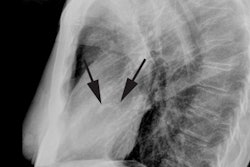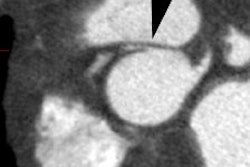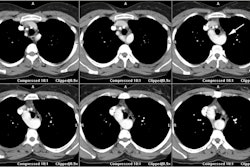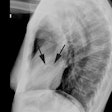Caseous mitral annular calcification:
- Clinical:
Caseous mitral anular calcification is a less common type (0.6%-2.7%) of mitral annular calcification [1]. In this condition, the calcification is a mixture of calcium, fatty acids, and cholesterol with a toothpaste-like consistency [1]. It is usually a degenerative process of the cardiac fibrous skeleton and most commonly affects the posterior mitral annulus at the atrioventricular groove [1,2]. Affected patients are usually asymptomatic, but mitral stenosis can occur if the calcification is very extensive [1].
- X-ray:
On CT, a peripheral rim of calcification (>500 HU) surrounding a central lower attenuation calcified area (HU 350-500) is present in the mitral valve annulus and is similar to a contrast filled lumen [1].
REFERENCES:
(1) J Cardiovasc Comput Tomogr 2011; Rajiah P, et al. Computed
tomography of cardiac and pericardiac masses. 5: 16-29
(2) Radiology 2013; Motwani M, et al. MR imaging of cardiac tumors and masses: a review of methods and clinical applications. 268: 26-43






